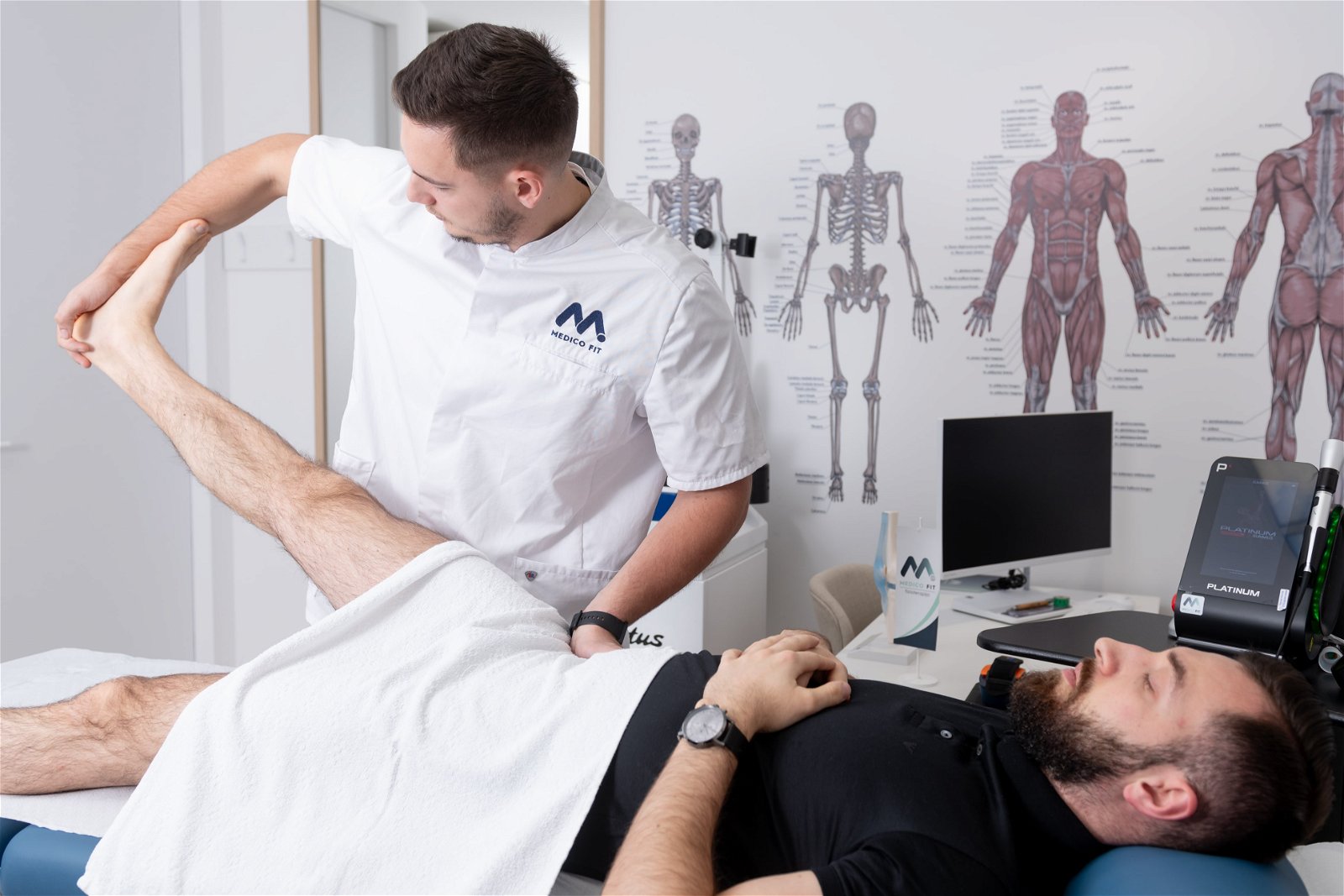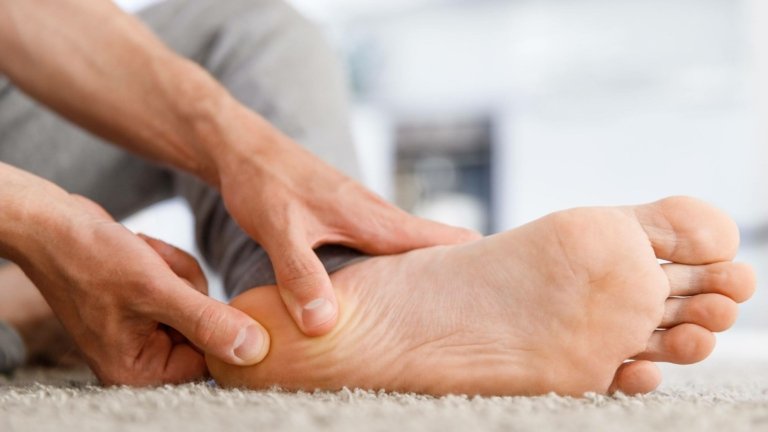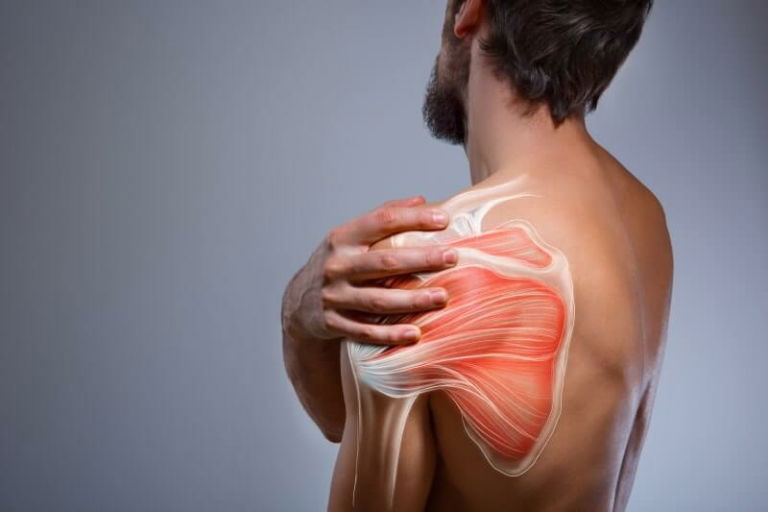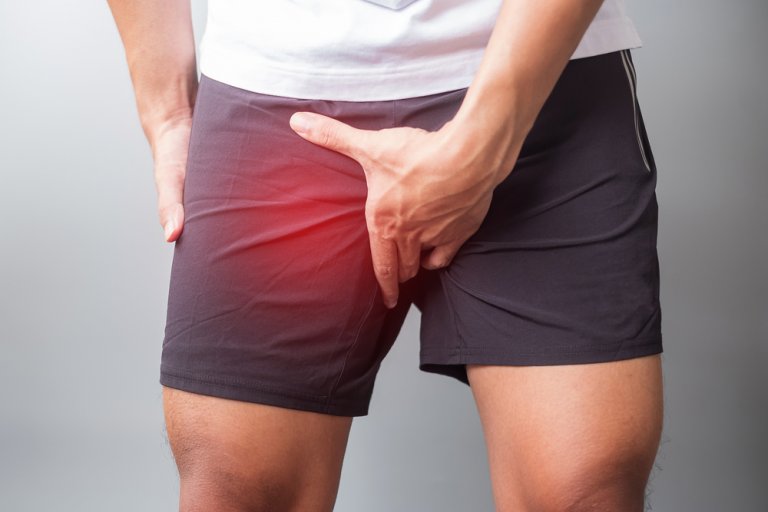-
Avascular necrosis of the femoral head
-
Cam deformity with dysplasia
-
Cam impingement
-
Cystic deformation of the labrum
-
Coxa valga
-
Coxa vara
-
Femoral head dysplasia
-
Femoroacetabular impingement (FAI)
-
Chondral lesions
-
Chondropathy of the femoroacetabular joint
-
Chondrocalcinosis
-
Trochanteric bone exostoses
-
Subchondral sclerosis
-
Osteitis condensans ilii
-
Pincer impingement
-
Perthes disease (Legg–Calvé–Perthes disease)
-
Acetabular protrusion
-
Rupture of the anterosuperior acetabular labrum
-
Hip labrum rupture
-
Sacroiliac arthritis
-
Synovial herniation pit/span>
-
Stress hip fracture
-
Subacetabular sclerosis
-
Gluteal tendinosis
-
Osteitis pubis
-
Slipped capital femoral epiphysis
-
Acetabular fracture
Avascular necrosis of the femoral head is the death of bone tissue due to a lack of blood supply. It is also called osteonecrosis and it can lead to tiny breaks in the bone and cause the bone to collapse. The process of avascular necrosis usually takes several months to several years.
A broken bone or dislocated joint can stop the blood flow to a section of bone. Avascular necrosis is also associated with long-term use of high-dose steroid medications and too much alcohol. Anyone can be affected, but the condition is most common in individuals between the ages of 30 and 50.
Avascular necrosis is successfully treated as part of the MEDICOFIT specialist physiotherapy for the hip.
Book a diagnostic therapy appointment for the hip >>
Cam deformity is an anatomical abnormality of the hip joint where the femoral head changes to a more oval or flattened shape instead of the normal spherical shape. This abnormality can cause abnormal contact between the femoral head and the acetabulum (hip socket), leading to damage to the articular cartilage and surrounding structures. Patients often experience pain in the groin, thigh, or buttocks that worsens with activity, especially with hip flexion and internal rotation.
Cam deformity is successfully treated as part of the MEDICOFIT specialist physiotherapy for the hip
Book a diagnostic therapy appointment for the hip >>
Cam impingement occurs when the head of the femur is malformed, causing it to not be perfectly round. This malformation causes friction against the edge of the acetabulum (hip socket) during movement.
As a result, damage to the cartilage or labrum (joint lip) can occur, leading to pain and limited mobility of the hip. This condition is common in younger, active individuals and can eventually lead to the development of arthrosis if not treated properly.
This disease is successfully treated as part of the MEDICOFIT specialist physiotherapy for the hip.
Book a diagnostic therapy appointment for the hip >>
Cystic deformation of the labrum occurs as a result of small injuries or degenerative changes that cause tears in the fibrocartilaginous tissue of the hip labrum. Over time, these cracks can fill with synovial fluid, leading to the formation of cysts. These cysts can cause increased friction and irritation in the joint, leading to pain and limited mobility.
Cystic deformation of the labrum is successfully treated as part of the MEDICOFIT specialist physiotherapy for the hip.
Book a diagnostic therapy appointment for the hip >>
Coxa valga describes a deformity of the hip where there is an increased angle between the femoral neck and femoral shaft. Coxa valga occurs when the angle between the neck and the shaft is greater than 140°. The normal angle in adults is between 125° and 135°. Individuals with coxa valga are at higher risk for hip subluxation.
Deformities of the hip are successfully treated as part of the MEDICOFIT specialist physiotherapy for the hip.
Book a diagnostic therapy appointment for the hip >>
Coxa vara describes a hip deformity where the angle between the femoral neck and femoral shaft is decreased, usually defined as less than 120°. It can be congenital or acquired. The common mechanism in congenital cases is a failure of the medial growth of the physeal plate.
Deformities of the hip are successfully treated as part of the MEDICOFIT specialist physiotherapy for the hip.
Book a diagnostic therapy appointment for the hip >>
Hip dysplasia is most common in infants and young children, but in milder cases it may not manifest until adulthood. If you have hip dysplasia, your femur does not fit into its socket in the pelvic bone. More specifically, the head of the femur is not optimally aligned with the curved socket in the pelvis (acetabulum), with which it should fit precisely.
This poor fit can damage the articular cartilage, which cushions the movement of your joint. In addition to symptoms such as pain and stiffness, individuals with hip dysplasia are more prone to hip dislocation.
Hip dysplasia is successfully treated as part of the MEDICOFIT specialist physiotherapy for the hip.
Book a diagnostic therapy appointment for the hip >>
FAI is a condition involving cam, pincer, or a combined type of impingement, where there is an abnormal contact between the femoral head and the acetabulum. The long-term FAI can cause damage to the articular cartilage and labrum, leading to pain, stiffness, and may contribute to the development of arthrosis. Symptoms usually include deep pain in the groin area that worsens with certain movements, such as bending or turning the hip.
This disease is successfully treated as part of the MEDICOFIT specialist physiotherapy for the hip.
Book a diagnostic therapy appointment for the hip >>
Chondral lesions are injuries to the articular cartilage that can occur due to trauma, degenerative changes, or FAI. These lesions cause pain and make movement difficult, and can lead to long-term problems such as arthrosis. On an MRI scan, chondral lesions appear as areas of torn or eroded cartilage with the possible presence of fluid in the subchondral bone.
This condition is successfully treated as part of the MEDICOFIT specialist physiotherapy for the hip.
Book a diagnostic therapy appointment for the hip >>
Chondropathy of the femoroacetabular joint is a pathological condition that indicates damage or degeneration of articular cartilage in the hip joint, where the head of the femur meets the acetabulum (the socket of the pelvis). This condition can lead to pain, reduced mobility, and functional limitation of the joint.
Chondropathy of the femoroacetabular joint is successfully treated as part of the MEDICOFIT specialist physiotherapy for the hip.
Book a diagnostic therapy appointment for the hip >>
Chondrocalcinosis is a condition in which calcium pyrophosphate dihydrate (CPPD) crystals are deposited in the articular cartilage, leading to joint pain and inflammation. In the hip, this condition can manifest with symptoms similar to osteoarthritis, with stiffness and pain in the joint. Linear calcifications in the cartilage or joint structures can be seen on X-ray scans.
This disease is successfully treated as part of the MEDICOFIT specialist physiotherapy for the hip.
Book a diagnostic therapy appointment for the hip >>
Trochanteric bone exostoses are bone growths that occur on the trochanter (the head of the femur). The trochanter is the attachment site of many muscles and tendons, which enable movement of the hip.
Exostoses can be caused by a variety of factors, including wear, inflammation, or injury. They often accompany degenerative joint diseases such as osteoarthritis. Bone growths can cause pain, limited mobility, and discomfort when moving the hip.
Hip exostoses are successfully treated as part of the MEDICOFIT specialist physiotherapy for the hip.
Book a diagnostic therapy appointment for the hip >>
Subchondral sclerosis is a pathological process involving an increase of the density of bone tissue just below the articular cartilage in the area of the acetabulum (hip socket). This process is usually a response to chronic stress or injury to the joint and is often associated with degenerative diseases such as osteoarthritis.
Subchondral sclerosis is successfully treated as part of the MEDICOFIT specialist physiotherapy for the hip.
Book a diagnostic therapy appointment for the hip >>
This is a benign condition that causes sclerotic (thickened) changes on the medial side of the iliac bone, where it attaches to the sacroiliac joint. It occurs mainly in women of reproductive age, often without pain or with mild low back pain. An X-ray scan shows symmetrical, triangular sclerosis on the lower part of the iliac bone near the sacroiliac joint.
This disease is successfully treated as part of the MEDICOFIT specialist physiotherapy for the hip.
Book a diagnostic therapy appointment for the hip >>
Pincer impingement occurs when the rim of the acetabulum (hip socket) is protruding or extending too far, causing compression of the femur during hip movement. This excessive coverage causes damage to the joint labrum, which can become inflamed, cause pain, and limit mobility. Pincer lesions occur more often in women and are often associated with activities that involve repetitive movements in the hips, such as dancing or gymnastics.
This disease is successfully treated as part of the MEDICOFIT specialist physiotherapy for the hip.
Book a diagnostic therapy appointment for the hip >>
This is a rare condition that affects children and involves a temporary loss of blood flow to the head of the femur, leading to its death (osteonecrosis). Due to reduced blood flow, the bone becomes weak and can become deformed, leading to difficulty moving and hip pain. Early treatment is crucial to prevent long-term deformities and problems in adulthood.
This disease is successfully treated as part of the MEDICOFIT specialist physiotherapy for the hip.
Book a diagnostic therapy appointment for the hip >>
Acetabular protrusion is a condition where the acetabulum deepens and pushes the femoral head medially toward the pelvis. It is often associated with diseases such as osteoarthritis, rheumatoid arthritis, or Paget’s disease. An X-ray scan shows movement of the femoral head beyond the ilioischial line, which is a sign of protrusion.
This condition is successfully treated as part of the MEDICOFIT specialist physiotherapy for the hip.
Book a diagnostic therapy appointment for the hip >>
A rupture of the anterosuperior acetabular labrum is an injury to the ring of cartilage called the labrum, which is located in the acetabulum, or hip socket. “Anterosuperior” means that the injury is located in the front and upper part of the acetabular labrum.
Symptoms of a rupture may include pain in the hip area, especially during movement or when bearing loads, limited mobility, a feeling of catching or locking in the joint, and instability or weakness of the hip.
Hip labrum rupture is successfully treated as part of the MEDICOFIT specialist physiotherapy for the hip.
Book a diagnostic therapy appointment for the hip >>
The cartilage ring (labrum) is located on the outer edge of the hip joint socket. In addition to cushioning the hip joint, the labrum acts as a rubber seal, helping to keep the head of the femur securely in the hip joint. A labrum rupture presents as pain in the hip or groin, and often a “clicking or creaking” sound can also be heard.
Athletes who participate in sports such as hockey, football, American football, golf and ballet are at higher risk for hip labrum ruptures. Structural problems of the hip, such as femoroacetabular impingement, can also lead to a labrum tear.
Labrum rupture is successfully treated as part of the MEDICOFIT specialist physiotherapy for the hip.
Book a diagnostic therapy appointment for the hip >>
Sacroiliac arthritis is an inflammation of the sacroiliac joints, which are located at the junction between the sacrum and the pelvic bone. It causes pain in the lower back, buttocks, and hip and is often associated with spondyloarthritis or ankylosing spondylitis. Radiological images show joint space narrowing, sclerosis, or erosions of the sacroiliac joint.
This disease is successfully treated as part of the MEDICOFIT specialist physiotherapy for the hip.
Book a diagnostic therapy appointment for the hip >>
The synovial herniation pit is an osteochondral depression on the posterior aspect of the hip bone, located at the border between the posterior and superior acetabular rims. These are benign bone changes associated with the pressure of synovial fluid from the joint on the subchondral bone.
Many synovial herniation pits are discovered incidentally during imaging studies and do not cause symptoms; if pain is present, there are most often underlying concurrent degenerative hip changes.
Degenerative hip changes are successfully treated as part of the MEDICOFIT specialist physiotherapy for the hip.
Book a diagnostic therapy appointment for the hip >>
Stress hip fractures occur due to repetitive stress that exceeds the bone’s ability to regenerate. They most commonly affect the femoral neck and are common in long-distance runners or military recruits. In the early stages, symptoms may only present as pain during activity, but over time, the pain can worsen even at rest.
This condition is successfully treated as part of the MEDICOFIT specialist physiotherapy for the hip.
Book a diagnostic therapy appointment for the hip >>
The term “sclerosis” refers to an unusual increase in the density or hardness of tissue in the body. In the case of bones, sclerosis means that a certain area of bone produces more new bone tissue than usual and becomes denser and thicker.
It is a hardening and thickening of the bone that occurs under the acetabular cartilage in the hip joint. This is a typical occurrence in hip osteoarthrosis.
Degenerative conditions are successfully treated as part of the MEDICOFIT specialist physiotherapy for the hip.
Book a diagnostic therapy appointment for the hip >>
Gluteal tendinosis is a chronic degenerative change in the tendons of the gluteal muscles, especially the gluteus medius and gluteus minimus. These muscles are crucial for pelvic stabilisation and hip movement. It is characterised by chronic pain on the outside of the hip, which may worsen with activity such as walking, running, or sitting with your legs crossed.
Gluteal tendinosis is successfully treated as part of the MEDICOFIT specialist physiotherapy for the hip.
Book a diagnostic therapy appointment for the hip >>
Osteitis pubis is an inflammation of the pubic symphysis and surrounding structures that occurs due to excessive strain or repetitive movements. It usually manifests as pain in the groin or pubic bone area, often in athletes such as footballers and runners. Signs of inflammation, such as erosions, osteosclerosis, or increased signal in the pelvis in the area of the pubic symphysis, may be observed on X-ray or MRI scans.
This disease is successfully treated as part of the MEDICOFIT specialist physiotherapy for the hip.
Book a diagnostic therapy appointment for the hip >>
Slipped capital femoral epiphysis (SCFE) is a condition where the epiphysis (the growth plate of the bone) at the femoral neck slips, and is more common in adolescents. It occurs gradually or acutely and causes pain in the hip, groin, or knee, and sometimes also a limp.
This condition is successfully treated as part of the MEDICOFIT specialist physiotherapy for the hip.
Book a diagnostic therapy appointment for the hip >>
Acetabular fractures occur due to direct trauma or a strong impact, such as car accidents or falls. The fracture is usually clearly visible on radiological images, often in combination with dislocation of the femoral head from the acetabulum, which requires immediate surgical treatment.
This condition is successfully treated as part of the MEDICOFIT specialist physiotherapy for the hip.
Book a diagnostic therapy appointment for the hip >>












